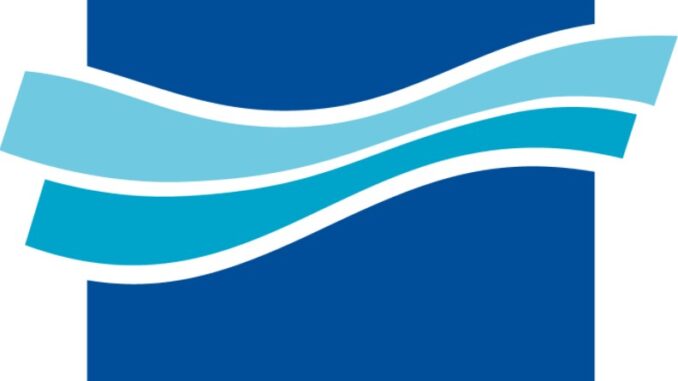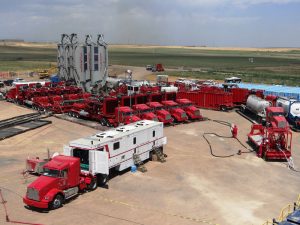
The Port of Corpus Christi saw a 65% increase in crude shipments in 2020 to 96.4 million mt, leading to a record tonnage throughput of 159.7 million mt in a year that saw immense volatility in the global crude market, the Port of Corpus Christ said in a press release late Jan. 21.
“Despite the extraordinary challenges we navigated in 2020, the Port of Corpus Christi and its customers have yet again demonstrated the resiliency of this strategic gateway for American goods to reach global demand centers,” Sean Strawbridge, CEO for the Port of Corpus Christi said in the release.
In December 2020 alone, the port tallied 1.9 million b/d of crude exports, the release said. This came at a time when Americas-loading dirty tanker freight rates were at or slightly above all-time lows due to ample availability of tonnage globally and lack of charterer interest.
In the first 11 months of 2020, the Port of Corpus Christi accounted for just over half of total US crude oil exports, averaging 1.63 million b/d, according to data from the Port of Corpus Christi and the US Census Bureau.
A combination of oversupplied global crude inventories and depressed demand amid a second-wave of lockdowns from the coronavirus outbreak has created muted ship inquiry across the board globally.
The cost of transporting two million barrels of crude out of the USGC to crude demand hubs of China and South Korea is at its lowest level since July 2018. The cost of taking a VLCC on the benchmark 270,000mt VLCC USGC-China route was last assessed Jan. 22 at lump sum $4.3 million. Freight for the route averaged $4.8 million in December 2020, 59% lower from December 2019.
Freight rates for VLCCs headed to China saw a 2020 high of $19.75 million on Apr. 1, reaching sky-high levels as Saudi Arabia flooded the market with crude barrels, sending the global crude environment into a contango pricing structure and prompting charterers to book up available ships for transport and storage of cheap barrels.
The cost of taking an Aframax, or 70,000 mt of crude from the USGC to the UK Continent, was last assessed Jan. 22 at $13.60/mt, up from the December 2020 average of $12.16/mt, and down from the December 2019 average of $41.57/mt.
Infrastructure supported export dynamics
Through 2019 and 2020, Corpus Christi saw major infrastructure developments that both expanded pipeline capacity into the port from production centers in West Texas and increased export capacity with the construction of new terminals.
As new pipeline connections to Corpus Christi like Cactus II, Gray Oak and EPIC came online in 2019 and 2020, the combined capacity of around 2 million b/d greatly increased the crude available for export out of the port. To accommodate the added pipeline infrastructure, new export facilities came online, while already built facilities, like the International Grain Port, were repurposed to handle crude.
Most notably, Buckeye Partners’ South Texas Gateway terminal was completed in Dec. 2020, making the terminal one of two complexes able to load VLCCs up to 1.25 million barrels. The terminal is expected to have the capacity to export 800,000 b/d.
These developments caused the crude oil export capacity of Corpus Christi and the Brownsville region to expand from 1.51 million b/d at the start of 2019, to around 4.41 million b/d by the end of 2020, according to S&P Global Platts Analytics. Platts Analytics forecasts capacity to expand further in 2021 to 4.95 million b/d.
Corpus leads USGC exports
By comparison, the Houston area had just 2.53 million b/d of export capacity by the end of 2020, and is not forecast to expand in 2021, according to Platts Analytics.
Crude and condensate exports out of Houston were at about 685,250 b/d in December 2020, according to Kpler data and averaged at 603,430 b/d for the period from January to November, US Census data shows. This compares to 1.499 million b/d of crude exports from Corpus Christi.
Aside from natural advantages the Port of Corpus Christi has over Houston, such as fewer fog days and a continental shelf that extends far less off coast, other factors like lower port fees and a far less robust regional refining complex have led to more competitive export prices out of the port versus rival locations.
Indeed, pricing for Eagle Ford condensate cargoes out of Corpus Christi were last heard at a 10 cents/b discount to cargoes out of Houston, while December 2020 barrels of WTI ex-pipe in Corpus Christi were heard between parity and a 10 cents/b discount to WTI crude at the Magellan East Houston terminal.



